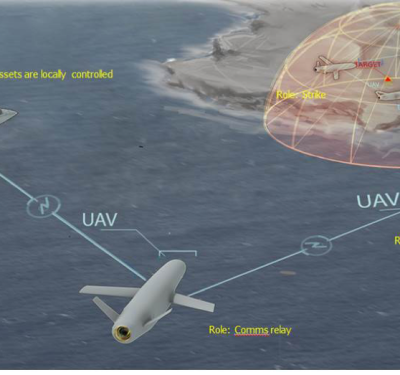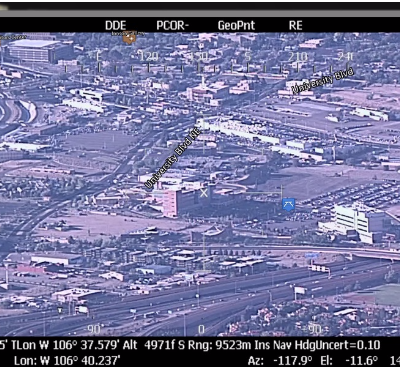Tennessee’s IPP team will hammer out the details of using drones for facility and plane inspection including how to safely operate unmanned aircraft on the grounds of one of the world’s busiest airports.
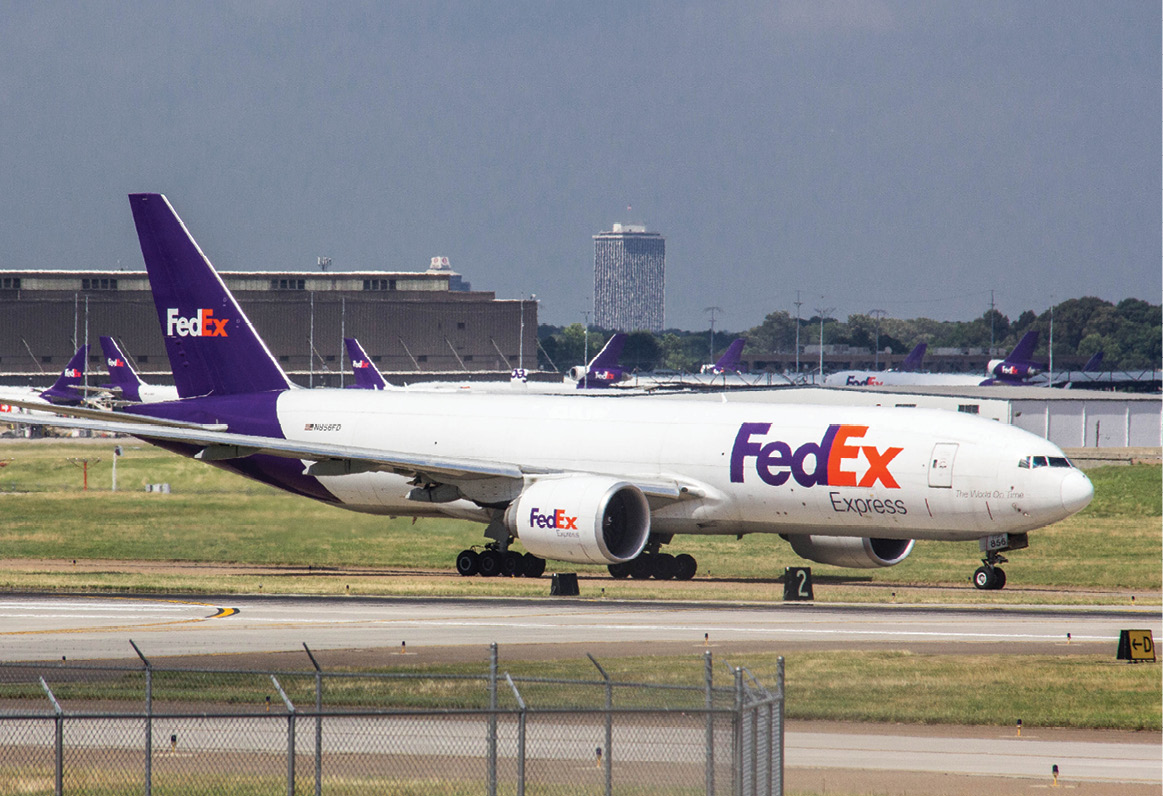
Fed Ex, which has a global hub at Memphis International Airport, will test using drones to inspect its planes and track equipment on its ramps.
Advances in technology, even those with world-changing potential, often take root first as a way to do chores—like the essential but time consuming job of checking fences.
In the case of Tennessee’s Memphis International Airport, that’s a big job. The airport covers some 5,000 acres—almost all of which is circled by a 10-foot high, razor wire-topped security barrier. The Integration Pilot Program (IPP) team led by the Memphis-Shelby County Airport Authority, will focus much of its initial efforts on working out how to use drones to check that fence as well as miles of runways and taxiways.
“We have intrusion detection systems built into our perimeter now, said Scott Brockman, the Authority’s president and CEO, “but we also, under our federal aviation regulations, our part 139 certification, we have to physically have somebody visually inspect those (fences) X number times a day. That takes a vehicle. It takes an individual. It takes a lot of time to drive that line.”
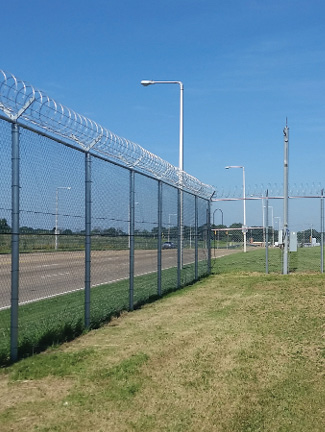
CHECKING THE FENCE
To handle the repetitive process more efficiently, Brockman’s team is working to develop the safety case for automated, drone-based security fence monitoring. This includes protocols and processes for beyond-visual-line-of-sight operations plus, potentially, operations
over people and flights during the day or at night. That nighttime element is important because Memphis is a global hub for FedEx and the world’s busiest airport between 10 pm and 5:00 am.
The goal is to have an unmanned aircraft system (UAS)—preloaded with a baseline of what it expects to see and topographical details like ground elevations—circle the perimeter on a preset schedule. When the drone comes within 20 feet of a runway, it will pause, Brockman said, and contact the communications center for permission
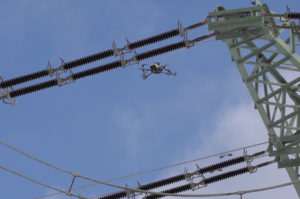
The IPP team will study using the Falcon 8+ drone to do inspections of runways, taxiways and fences.
to proceed before crossing. The tower will be able to see the unmanned aircraft in that it will look different from a manned aircraft on its radar.
“Our plan, Brockman said, “is to work on a system—hardware and software, docking stations charging stations—where that drone automatically—when its time comes—lifts off, logs in and starts sending out signals to the communication center and starts to fly that fence line. When it sees something that is different from the baseline—the baseline will constantly be updated—it then alarms and sends a signal back with a high-resolution photo of what the problem is. Once released by the com center it continues flying and dispatch either sends somebody or logs in and says there’s not a breakdown (in the fence).”
RUNWAY INSPECTION
The Tennessee team is the only one based at an airport. The capability to integrate into the airport’s control systems is essential for both the fence-checking use case and for a related task—inspecting the runways and taxiways damage and debris.
Deterioration of a runway’s surface can cause problems and items on the runway, like a bolt dropped from a maintenance vehicle, can be dangerous if they get sucked into the engines of a plane.
UAS will be able to see more than their human counterparts, Brockman said. “A drone-flying a foot off the pavement taking high-resolution images and comparing it to a base(line)—will pick up the slightest imperfection there is. It will also record changes in topography, additional cracks. I just became better at maintaining my runway. I just became safer by identifying even the smallest particles of FOD (foreign object debris).”
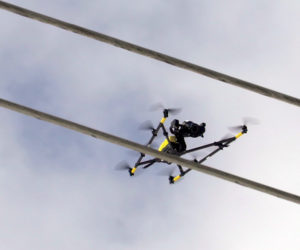
Intel’s Falcon 8+ drone has the ability to stay a preset distance from the object being inspected.
Drones will only inspect the runways when there is sufficient time between flights. Exactly what that means, however, has to be determined.
Intel, one of the IPP team’s members, plans to use its Falcon 8+ for runway inspection—but the runway is two miles long and it’s not clear how many passes will be needed, said Karim Tadros, the firm’s director of business development and product management.
“So you’ll send the drone down and back, Tadros said, that’s a four-mile path for a drone. And depending on what speed you have to travel, so that you ensure adequate resolution, maybe we have to look at our fixed wing drone, the Intel Sirius Pro.”
AIR TRAFFIC MANAGEMENT
AiRXOS, a venture of GE, will be the UAS Service Supplier (USS) for the IPP team. USS providers are part of the overall UAS traffic management (UTM) system being developed by NASA. They will manage local drone operations and keep UAS from interfering with each other and with other users of the airspace.
“There will be different people flying, different operators that will fly, and they will upload their flight plans into our system,” said Ken Stewart, AiRXOS’ general manager. “We’ll authorize those flights, based on the criteria that they provide us, and then we’ll ensure that the UAV (unmanned aerial vehicle) that’s flying will be communicating.”
AiRXOS will also be the conduit for getting test data to the FAA, Stewart said. “What we’re able to do is capture the data to ensure that they’ve got the authorized airspace, they’re cooperative, they’re conforming to their flight plan and then that data is gathered from that—and then that data is transferred over to the FAA as part of these programs.”
In the meantime, while AiRXOS is keeping track of the airport’s drone traffic, the drones will be helping the airport keep track of its ground traffic.
ASSET TRACKING
Federal Express and Memphis International plan to test using UAS to do security monitoring of the FedEx ramp area where a large fleet of vehicles is used to service the planes and move materials.
“If you can picture 170 parking positions (and) within the area between every one of those jet parking positions all of the associated equipment, whether that be fuel pumping equipment, whether that be tugs and dollies… It is a significant amount of square footage of apron that they are responsible for and manage,” Brockman said.
FedEx wants to fly drones over those areas to monitor security, Brockman said, “which means they will be flying not only daytime, but also at night, and will be flying over people and will be flying in interaction with other drones that have all been programmed to do that in a way where they interact with each other and don’t conflict.”
FedEx said in a written comment it was pleased Memphis had been selected as one of the IPP teams. “We are supportive of testing and research in the FAA Unmanned Aircraft System pilot program.”
Tadros suggested artificial intelligence could be used to help discern what types of vehicles are in the ramp area.
“So today we are already demonstrating with our drone and our post-processing data platform—called the Intel Insight Platform—the ability to detect not only vehicles but the type of vehicle. So we can detect if it’s a sedan, a truck, a piece of construction equipment. With the right training we can detect if it’s a tug or a cart or another type of equipment. Then it’s just a matter of you flying as needed. And you then do the post-processing and immediately can tell from that, ‘Oh, well, here are all the tugs. I need a tug. Here’s the closest one. Let me go get it.’”
LOOKING AHEAD
Brockman sees the work needed to develop the safety case for FedEx’s equipment tracking application as an opportunity to further another type of application—drone delivery of aircraft parts from the warehouse to the maintenance areas.
The four areas being researched by the Memphis IPP team—perimeter fence monitoring, runway/taxiway inspection, tracking of traffic on FedEx’s ramps and the inspection of the airplanes themselves (see Inspecting Aircraft with Drones on Page 35) are only a slice of what the Airport Authority had originally proposed in the plan it submitted to the Federal Aviation Administration (FAA).
After assessing the proposals from all 10 winning teams, however, the FAA asked a number of them, including Memphis, to focus on only a few key activities (see intro story FAA Sharpens IPP Teams’ Focus on Page 16). But that does not mean the other use cases are completely off the table. In fact, Brockman said they can use what they are doing to support these additional activities.
Once you get the communication protocols for two drones doing ramp inspection, Brockman told Inside Unmanned Systems, they can be used for drones delivering parts because they’re doing much the same thing over the same area. “They would communicate, just like two drivers on the ramp would, to allow for passage in a safe and efficient way.”
Among the other drone applications the Memphis team would like to pursue are building inspection, water sampling, automated river monitoring, fast-first-look capability for emergency response, medical device delivery, emergency communications via drone hubs, precision agriculture and wildlife counts.
Brockman said the FAA agreed to let his team support some of these secondary applications by bringing elements of their testing into the expedited IPP work underway for the top four tasks—if that additional testing was relevant to the priority work. The FAA also said it would ‘absolutely’ support a broader effort once Memphis had progressed sufficiently on its four primary focus areas.
“The de-scoping is not going to impede any one of our missions from being flown,” Brockman said. “What it will do is change the timing of them.”
Timing is perhaps less of an issue for Brockman, a self-described aviation geek, who has a vision for evolving Memphis International into a hub for unmanned innovation, service and manufacturing. He sees a day when an airport-based fleet of driverless cars drop off and pickup passengers and automated air taxis move people from the surrounding area to the airport and back.
“My excitement my passion, all of what I expressed initially on this—why we want to be in this program—has not changed a bit,” Brockman told Inside Unmanned Systems. “…I’m no less invigorated today than I was. We’ve just got to do it in a little different way.”


